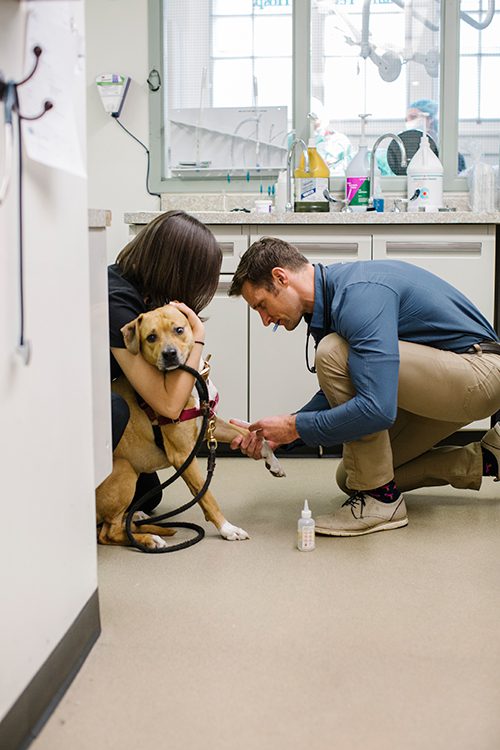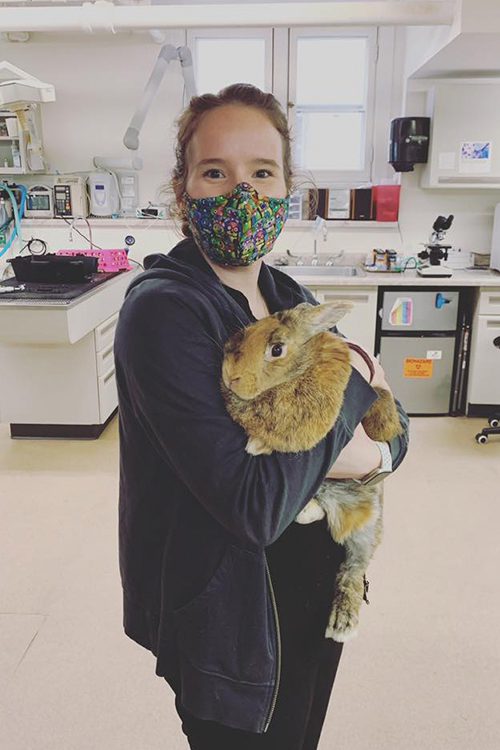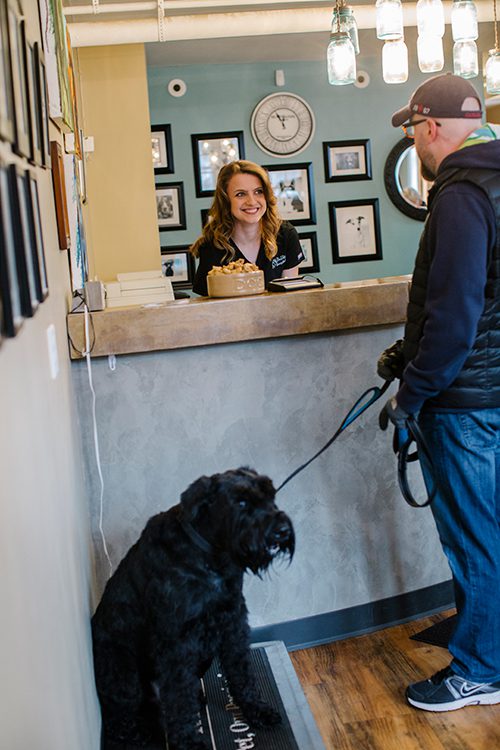Veterinary Jobs 101: What Career Options are There in Veterinary Medicine?
For individuals who love animals and helping others, veterinary medicine offers these natural caregivers the perfect opportunity to do something that’s more than just work. And the great thing about veterinary medicine, aside from being challenging and rewarding, is that it gives those in entry-level positions the ability to move up the rungs to higher-level positions. Many animal hospitals also provide continuing education, mentorship programs, and more to help their employees advance their careers.
Below, we offer a rundown of the primary veterinary jobs available in the field.
Veterinarian/Associate Veterinarian
To become a veterinarian, you must complete a 4-year veterinary medicine program at an accredited college. You will need to take courses in biology, chemistry, and animal science in order to be accepted into a veterinary college. The veterinary program is not limited to the classroom; it also involves working in a laboratory and in a clinical setting for essential hands-on experience.
Having a background of working with animals, whether at a vet clinic, a shelter, or a farm, also adds to your experience and can make you a more attractive prospect for practices that are hiring.
Going beyond education, you must also obtain a license to practice veterinary medicine in your state. To do this, you will need to pass the North American Veterinary Licensing Examination.
Veterinarians supervise all medical staff and uphold the hospital’s policies and procedures to provide the highest level of care to patients and their families.
The associate veterinarian provides all manner of services to ensure the health and well-being of his/her patients. This includes medical care, surgery, dental care, an array of diagnostics, nutritional counseling, and much more.

The Veterinarian’s Duties
The veterinarian functions similar to a physician for humans. They like to see their patients annually or semiannually to make sure they’re doing well and not harboring any underlying issues.
They manage all medical aspects of the practice. Their duties include:
- Performing examinations on animals to evaluate their health, detecting any abnormal physical signs, running diagnostics to check for underlying issues, and diagnosing any problems that exist
- Performing a variety of surgical procedures, including spays and neuters
- Prescribing medications and supplements as needed
- Offering nutritional recommendations suited to each pet’s individual needs
- Cleaning and repairing wounds
- Administering vaccinations to protect pets against various diseases
- Running a wide range of lab tests to check for parasites, infections, and abnormal organ values
- Operating advanced medical equipment such as surgical laser, X-ray machine, ultrasound machine, etc.
- Performing euthanasia procedures
Certified Veterinary Technician
Certified Veterinary Technicians (CVT) provide invaluable support to the veterinarian(s). Their duties encompass virtually every area of the clinical space. From AAHA: “Veterinary technicians are animal nurses (and much more.” It would be easier to list what they don’t do at the practice: Diagnosing diseases, performing surgical procedures, prescribing medication, and making prognoses.
In order to become a CVT, you will need to undergo rigorous training and graduate from a college that is accredited by the American Veterinary Medical Association. An associate’s degree in veterinary technology is required and covers a wide range of topics, including animal anatomy, anesthesia, radiology, pharmacology, animal handling and nursing, surgical nursing, lab testing, and more. Then, you will need to pass the Veterinary Technician National Exam to get your license.
The Certified Veterinary Technician’s Duties
CVTs do just about everything else that’s required to keep the hospital running well and keep patients happy and healthy.
Some of the technician’s duties include:
- Taking the patient’s vital signs, gathering medical histories, and drawing blood samples
- Educating pet owners
- Assisting the veterinarian during surgeries and dental procedures
- Getting animals ready for surgical procedures
- Obtaining specimens
- Running laboratory tests
- Administering vaccines and medications as directed by the veterinarian
- Administering emergency first aid
Veterinary Assistant
The veterinary assistant provides support to the veterinarian(s) and CVT(s) at the practice. Unlike with CVTs, there aren’t any credentialing exams required to become a veterinary assistant. They learn their skills on the job, under the supervision of the technician and veterinarian. Often, veterinary assistants may choose to pursue the role of CVT or Veterinarian and pursue the programs necessary to become licensed.
The Veterinary Assistant’s Duties
In the role of veterinary assistant, your duties will generally include:
- Assisting in the handling and restraint of animals
- Making sure animals in the care of your practice are fed, exercised and comfortable
- Keeping the practice clean and organized, including the exam rooms
- Sterilizing hospital tools and equipment
- Taking on clerical duties (transactions, checking in, etc.) when needed
- Bathing and grooming animals
- Soothing animals during treatment

Client Service Representative
The client service representative (CSR), or receptionist, presides over the front desk and lobby. In this client-facing role, the CSR handles everything related to the client experience. From the moment the client walks in to the moment they leave, the CSR is responsible for making sure everything goes smoothly for them. Additionally, because they are the “face” of the practice, the CSR must maintain a friendly, professional demeanor at all times, especially under stressful circumstances. Working the front desk is by no means an “easy” job, as it means always being available during opening hours to help clients with anything they need.
The CSR’s Job Duties:
The primary duties of the CSR include:
- Checking clients and patients in
- Developing and maintaining positive relations with clients
- Answering phones and scheduling appointments
- Answering all kinds of pet-related questions
- Completing financial transactions
- Keeping patient files organized and up-to-date
- Keeping the front desk and lobby areas clean and organized

Practice Manager
The practice manager oversees all of the business aspects of the veterinary practice. They report to the practice owner and play a major role in keeping the practice running on all cylinders. Budgeting, team management, organization, diplomacy, responsibility, and a take-charge attitude are just some of the ideal qualities practices look for when hiring for practice managers.
The Practice Manager’s Duties
This job involves:
- Hiring and training employees
- Maintaining inventory
- Setting fees
- Implementing safety policies and procedures
- Coordinating employee performance reviews
- Preparing budgets and financial statements
- Overseeing practice software and monitors usage to ensure all records are entered properly
- Ordering non-medical items for the practice
- Resolving client issues, such as collecting on unpaid accounts
- Monitoring KPIs (key performance indicators) and sets performance goals
- Helping to resolve staff issues while maintaining professional relationships
- Cultivating a positive, team-oriented environment where everyone supports one another
There is much, much more to being a practice manager than what is listed above. This leadership role is challenging, but ultimately rewarding for those who thrive in a fast-paced environment and love being around people.
We invite you to check out what veterinary jobs in St. Paul, MN are available at St. Paul Pet Hospital by visiting our Careers page.

